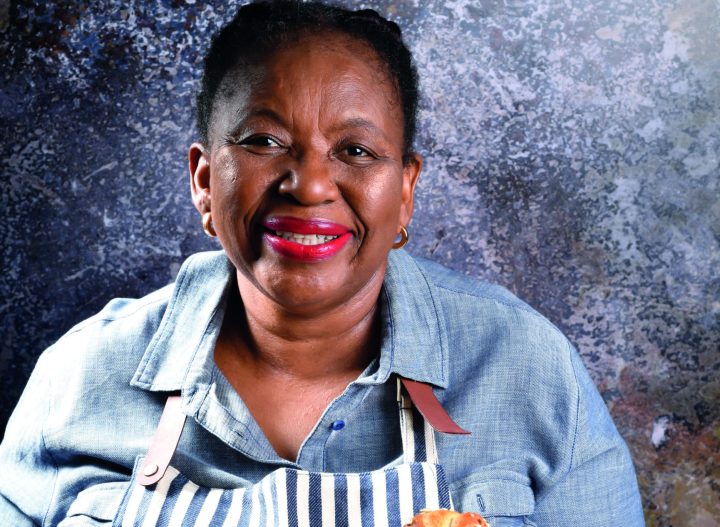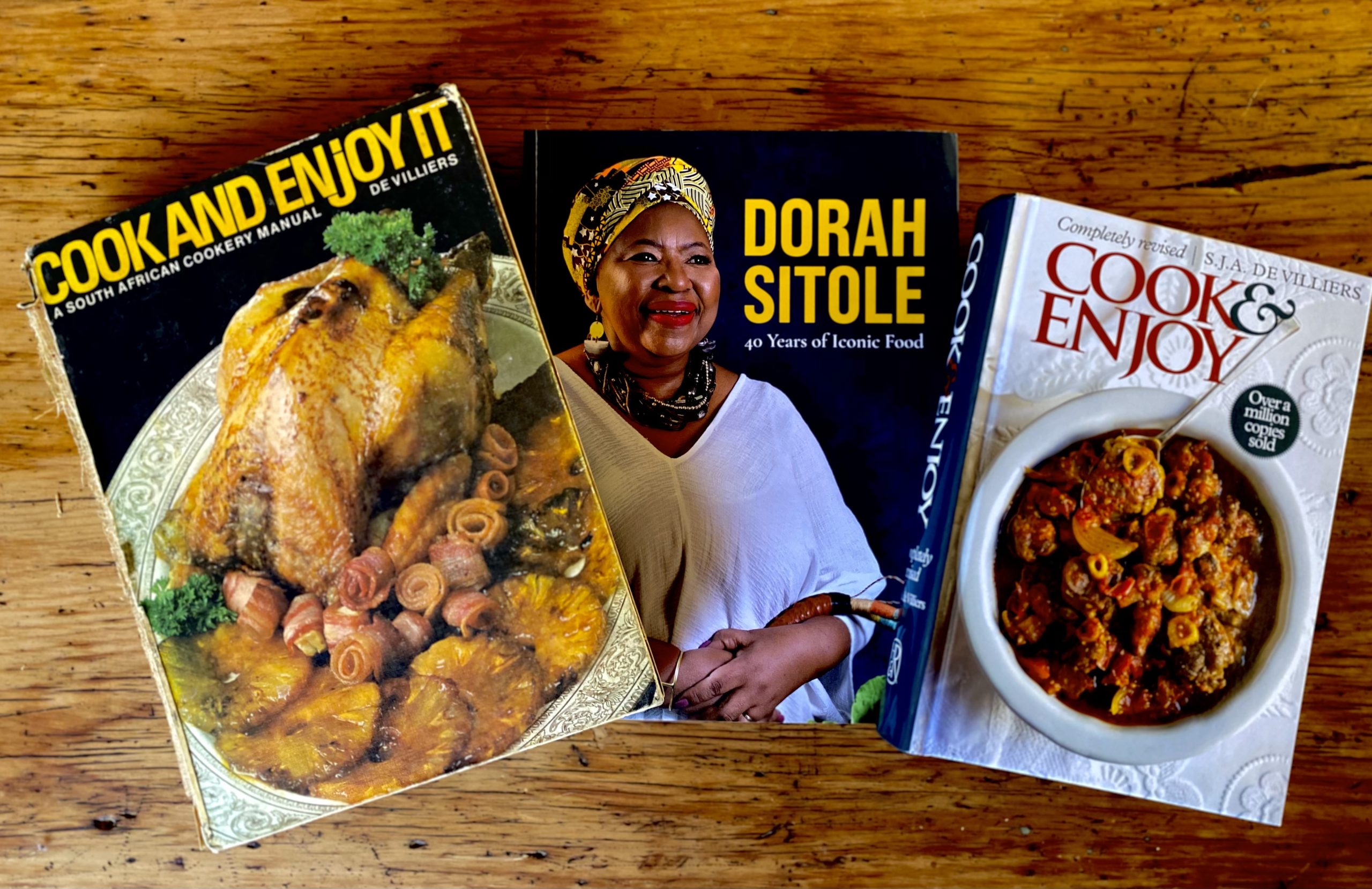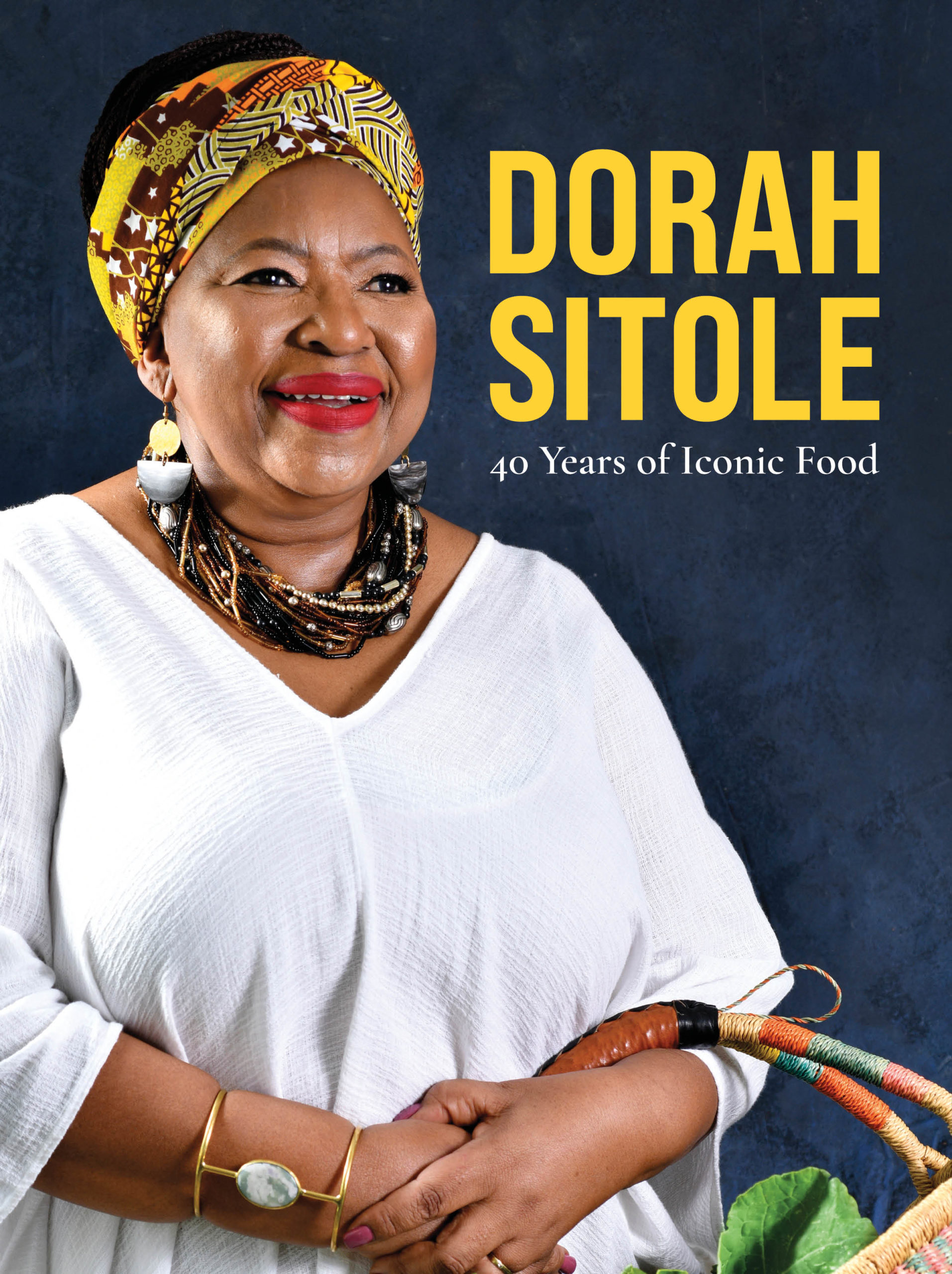Tribute
Dorah Sitole 1953-2021: a brilliant career culminated in an iconic work

The great South African food writer, author and editor Dorah Sitole died in a Johannesburg hospital on Sunday of Covid-19 complications, her family and publisher confirmed. Sitole had just entered what she had called her encore years which, sadly, turned out to be short lived. But her final work deserves to last for decades to come.
What a swansong Dorah Sitole’s final work was: a triumph of a book in that least triumphant of years, 2020. On first opening her book, Dorah Sitole 40 Years of Iconic Food, in November last year I was captivated, and it’s not easy to be enthralled when so many cookery books are on the market, all vying for shelf space and your attention.
It was clear that this was no ordinary cookbook. Nor was it merely a cookbook. When any book has the heart and soul of the writer in it, it transcends its genre. Now more than ever it deserves to stand testament to Sitole’s status, earned over more than 40 years in the industry, alongside the other late greats of South African food writing whose passing is lamented, from Hildagonda Duckitt and Louis Leipoldt to SJA de Villiers and Lannice Snyman, with whom Sitole once collaborated.
Her publisher, Human & Rousseau, said on Monday that Sitole was “a significant icon, respected and loved by all who met her. Everyone at the publishing house extends sincere condolences to Dorah’s family at this most difficult time.”
Eloise Wessels, CEO of NB Publishers, said: “Dorah Sitole was not only an icon of the South African culinary landscape but was a pioneer in popularising traditional and contemporary African cooking and cuisine in a broader context; she was also a lovely, kind and deeply generous person. We shall miss her terribly.”
Olinka Nel, procurement director of CNA, said: “Dorah paved the way for a whole new generation of black female chefs in South Africa, and will always be remembered as a cultural pioneer. It has been such an honour to sell her books and to launch her last gift to the nation. Everyone at CNA is devastated by the news.”
If you collect cookbooks and somehow missed Sitole’s new book, published only a few months ago by Human & Rousseau, here’s what you need to know about it, from my review published in late November 2020:
Once in a while a cookery book comes along that stands out from the pack. Dorah Sitole’s new book is a tour de force that closes the circle opened by SJA de Villiers when she first published Kook en Geniet in 1951. It deserves to be on any South African kitchen bookshelf worth its salt.
Seven decades after SJA de Villiers, a Stellenbosch home economics graduate, self-published an encyclopaedic Afrikaans cookery book with her geologist husband Japie, in 1951, Dorah Sitole writes in her foreword for her newly published book, Dorah Sitole: 40 Years of Iconic Food: “I would love this cookbook to be a well-thumbed reference book that will sit on kitchen worktops and be used as a guide to all things culinary! I see it doing what my very first recipe book, Cook and Enjoy It, a South African Cookery Manual by SJA de Villiers (which my late husband Archie gifted to me in the first year of our marriage), did for me.”
This would be sweet and lovely but not notable were the book not the triumph that it is.
Like the De Villiers classic, Sitole’s book deals chiefly with well-known recipes we all would like to know how to make, but then she throws in a slew of modern dishes as well. And, though she starts with and steers a course through so many South African dishes – and it is important in this context that her recipes run the gamut of our entire nation’s cuisines – she then forays abroad to show off the culinary wonders she encountered in her many travels in Africa and throughout the world.”
In a foreword to her book, Sitole wrote that she’d also included the two decades that prepared her for the “path I was to walk”. “I truly believe my relationship with food was formed by my childhood experiences. And with my encore years, this story spans six-and-a-half decades!”
It should not be glossed over that the racial divide was present in the food writing and publishing industry, and those of us who were exposed only to the white food writers were the poorer for it; also missed was the opportunity to unite us through shared culinary heritages. Heritage Day, for instance, had everything to do with food for Sitole, as she wrote: “Marked by a kaleidoscope of colours and flavours, Heritage Day is a day many South Africans proudly celebrate. Across the country, tables will groan with food for friends and families. The base ingredients are often the same: meat, starches and vegetables. But cuisine isn’t fixed: every individual brings their history and themselves to the kitchen.
“Maize meal and water, for example, can turn into different dishes based on whether it’s being cooked in KwaZulu-Natal or Limpopo. From breyani to idombolo (steamed bread), meals carry a story; they tell who we are and where we come from. And there’s no better demonstration of this culinary account than what we eat on Heritage Day. Whether we braai or roast in the oven, eat traditional food alongside pasta, or even decide to get takeaways, Heritage Day is ours to celebrate, however we choose to do so.”
Born at the Shanty Clinic in Soweto on 24 September 1953, Sitole became fascinated by food, in particular rhubarb, at just two when living at her grandfather’s house where her aunt Mani Maria grew vegetables including rhubarb. There were a few chickens and food was scarce, with 10 mouths to feed, so in winter it was “mostly pap and tripe” while chickens were “reserved for special days when important guests came to visit”.
“Then Mani would catch one, slaughter it and dunk it in boiling water. When it has cooled down just a bit, we children would pluck the feathers until the bird was perfectly clean. This was a meal to look forward to, we ate everything, including the feet, intestines and head.”
Isikhokho, the bottom crust of a pot of pap, served with sweet black tea, “was our breakfast before school”, Sitole wrote. “We would have pap and sugar or vinegar on the days when there was no money to buy tripe and there were no vegetables in the garden. Hunger pangs were the order of the day; there were no snacks between meals.”
Contrast that with the book Dorah produced shortly before her death, in which she has recipes from around South Africa, throughout Africa from west to east and north to south, and from throughout the world thanks to her travels abroad.

Cook And Enjoy It, published in 1961 (following the Afrikaans original Kook en Geniet), the modern edition (shortened to Cook & Enjoy) on the right, first published in 1992, and Dorah Sitole’s new 40 Years of Iconic Food in the centre. (Photo: Tony Jackman)
Moving back to Dube, Soweto, in 1963 represented a “whole new life” for the teenage Dorah, “and a whole new way of eating”. “All of a sudden I was in a home where bread and fresh milk were bought every day. There was jam and peanut butter to spread on the bread… for supper, our go-to isishebo was the mixed legumes stew: made with lentils, barley and split peas.”
School holidays took them to Ratanda, Heidelberg, where her aunt Joana worked for the local Eskort pork factory and would bring home treats including smoked pork ribs, “which were to die for, grilled in the oven and served with pap and atchar”.
Hard times ensued thanks to her alcoholic father and hardworking mother sending her to live with in-laws, a familiar story throughout the land. But study at Unisa led to a job in market research. She earned decent money and took over cooking the family meals. A colleague, Sis Iris Grootboom, was “an exceptional cook” and Dorah learnt many things from her, including how to cook Nasi Goreng (which is in her book). “She shared her recipes with me and would invite me to assist her when she was catering for weddings over the weekends. I remember how excited I would get whenever I was cooking with her; she opened a new world for me and I loved every moment.”
Dorah remarks as an aside: “Now in the 70s in Soweto, who cooks an Indonesian dish? She was definitely my hero! I still cook some of her recipes.”
She learnt about baking from Ausi Lizzy Dipale, “the ultimate baker”, from whom she got her love for working with yeast. In her book, she remarks with her trademark shyness while allowing herself pride in her achievements, “I can confidently say that I make good bread, both baked and steamed; to my amusement, well-known chef and food writer Anna Trapido crowned me ‘the queen of Idombolo’, a title I proudly accept!”
Sitole chanced into food writing when she took a job as a home economist for the Canned Food Advisory Service and, in 1987, fell into writing about food for True Love magazine.
She tells her life and food story, richly and sweetly, and walks us through the food of her decades. Not “only” the four decades in the food and food writing industries, but the “two decades that prepared me for the path I was to walk” and on to what she calls “my encore years”.
Sitole wrote of the De Villiers classic Cook and Enjoy It: “The first edition of that modest book had zero food pictures in it, but was packed with basic recipes, and a few advanced ones, turning me into a confident cook.”
Her book does not attempt to be exhaustive in the way that the De Villiers book was (and it is still in print, remarkably). That was a niche that was filled in 1951 and remains filled, and Sitole and her publishers evidently knew the wisdom of this. Her book is not a manual, nor does it attempt to be. While being a walk through the author’s life and food journey, it also traipses through the kinds of recipes we all look to Cook And Enjoy It for when we want a traditional recipe we can trust, but woven into this are the foods of Sitole’s life that escaped De Villiers’s notice, because our world was different then.
Near the end of my review, I surmised: If SJA de Villiers had known these recipes back in 1951, and had included them in her book, would we all have grown up with them, and would it have helped bridge the chasm? We will never know, but to add this book to your collection, and position it on the shelf right next to Cook And Enjoy It, would seem so right.
And then, but read now with poignancy, I concluded: May her “encore years” be long, rich and happy. Take a bow, ma’am. It’s seldom that I am in awe, and I am right now.
Her encore years were to be sadly short, but the legacy of this extraordinary book, the culmination of her 40 years and more in the food industry in South Africa, will stand in honour on the cookbook shelves of all those who appreciate what our food writers bring to us in recording the recipes of our lives and our people, and of our times together. It belongs on your cookbook shelf, right there, alongside SJA De Villiers’s Cook and Enjoy It. DM


















 Become an Insider
Become an Insider
Around 15 years ago I had the distinct pleasure of working with Dorah on a TV series for the SABC. Over and above her amazing talents in the kitchen, she was also a lovely lady – warm, generous and a lovely sense of humour. RIP Dorah. The world’s a poorer place without you.